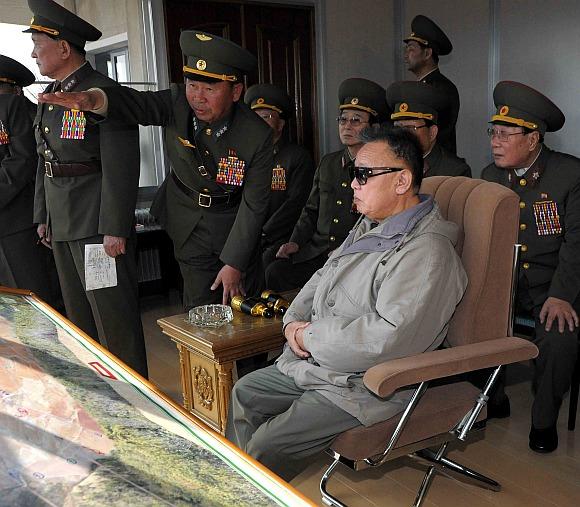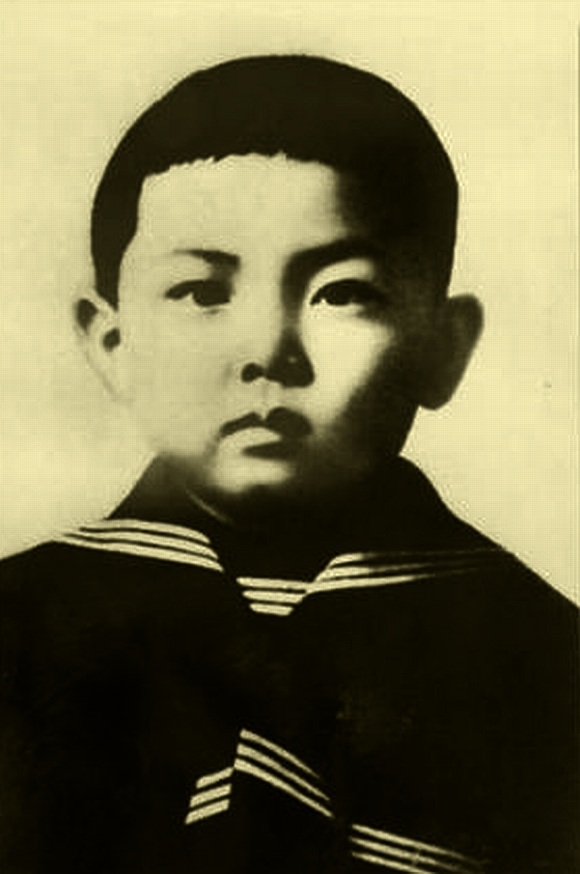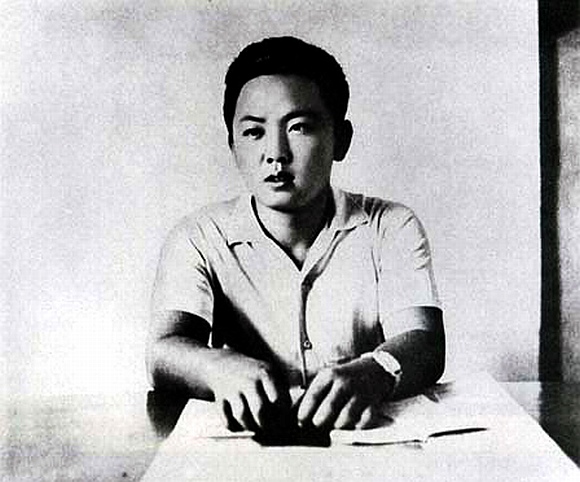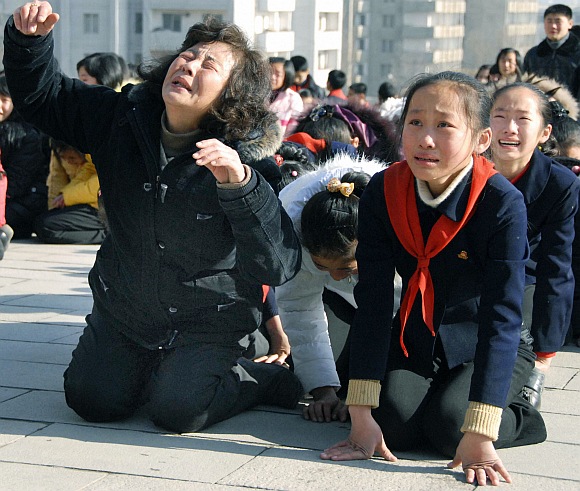 | « Back to article | Print this article |
IN PICS: Man who turned North Korea into a nuclear state
He was heard about, revered and feared in equal measure, but the ruler of the world's most secretive regime was rarely seen in public. Kim Jong-il, who led the communist nation since the death of his father in 1994, died on a train while visiting an area outside Pyongyang, the capital.
The leader, reputed to have had a taste for cigars, cognac and gourmet cuisine, was believed to have had diabetes and heart disease.
Click NEXT to read further...
IN PICS: Man who turned North Korea into a nuclear state
Kim Jong-il's official biography states that he was born in a secret military camp on Baekdu Mountain in Japanese Korea on 16 February 1942.
Official biographers claim that his birth at Baekdu Mountain was foretold by a swallow, and heralded by the appearance of a double rainbow over the mountain and a new star in the heavens.
The family moved into a former Japanese officer's mansion in Pyongyang, with a garden and pool. Kim Jong-il's brother, "Shura" Kim (the first Kim Jong-il, but known by his Russian nickname), drowned there in 1948.
Unconfirmed reports suggest that five-year-old Kim Jong-il might have caused the accident.
Click NEXT to read further...
IN PICS: Man who turned North Korea into a nuclear state
Throughout his schooling, Kim was involved in politics. Kim is also said to have received English language education at the University of Malta in the early 1970s, on his infrequent holidays in Malta as guest of Prime Minister Dom Mintoff.
By the time of the Sixth Party Congress in October 1980, Kim Jong-il's control of the Party operation was complete.
He was given senior posts in the Politburo, the Military Commission and the party Secretariat. When he was made a member of the Seventh Supreme People's Assembly in February 1982, international observers deemed him the heir apparent of North Korea.
On 24 December 1991, Kim was also named supreme commander of the North Korean armed forces.
Click NEXT to read further...
IN PICS: Man who turned North Korea into a nuclear state
Since the Army is the real foundation of power in North Korea, the Defense Minister Oh Jin-wu, one of Kim Il-sung's most loyal subordinates, engineered Kim Jong-il's acceptance by the Army as the next leader of North Korea, despite his lack of military service.
The only other possible leadership candidate, Prime Minister Kim Il, was removed from his posts in 1976. In 1992, Kim Il-sung publicly stated that his son was in charge of all internal affairs in the Democratic People's Republic.
In 1992, radio broadcasts started referring to him as the "Dear Father", instead of the "Dear Leader", suggesting a promotion. His 50th birthday in February was the occasion for massive celebrations, exceeded only by those for the 80th birthday of Kim Il Sung himself on 15 April that same year.
Click NEXT to read further...
IN PICS: Man who turned North Korea into a nuclear state
For nearly 20 years, Kim defied and baffled international leaders with his isolated regime's nuclear ambition, inflammatory rhetoric and surprise attacks on South Korea, including the suspected March 2010 sinking of a Southern military ship and the bombing of Yeonpyeong, a South Korea-controlled island in November of that year.
Foreign Policy called him a "personality-cult-cultivating isolationist with a taste for fine French cognac". In Kim Jong Il's merciless regime, lakhs of dissenters were thrown into prisons and labour camps located in the countryside, and they are held under brutal conditions.
In September 2010, Kim Jong Il unveiled his third son, the twenty-something Kim Jong Un, as his successor, putting him in high-ranking posts.
Check out our TOP slide shows
Click on MORE to see another set of PHOTO features...





